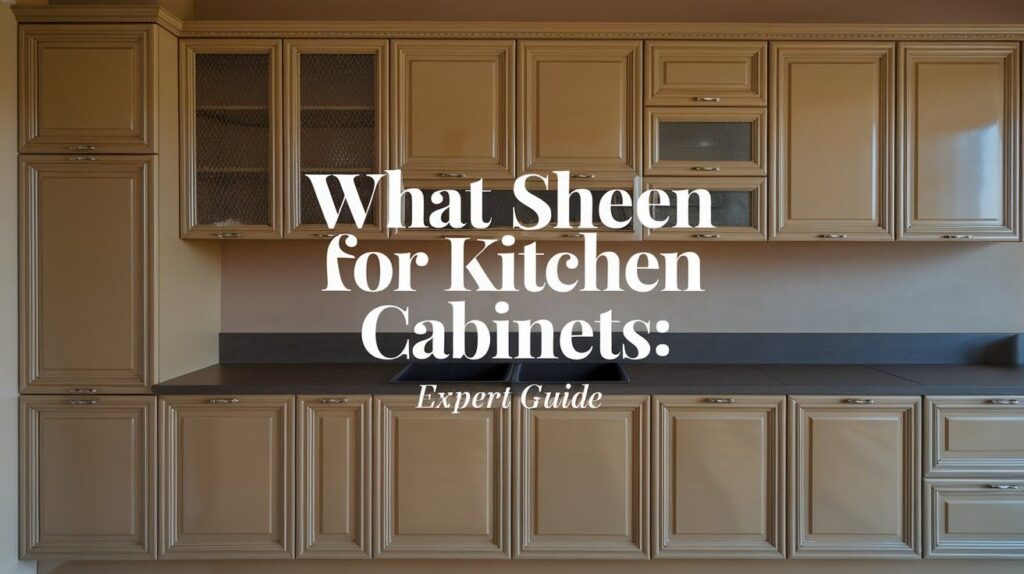Choosing what sheen for kitchen cabinets shouldn’t make your head spin. I get it. Cabinets should look good. Cabinets should endure cooking, cleaning, and daily life.
I’ve painted hundreds of kitchens now. I know which finishes hold up. I know which ones don’t. In this guide I’ll explain about matte, satin, semi-gloss and high-gloss finishes.
I’ll also explain which sheen is best for your cooking habits along with how well they stand up to splatters and fingerprints and which styles work best for each finish.
You will be able to identify the best sheen for your space. This will occur by the end.
Why Choosing the Right Sheen Matters
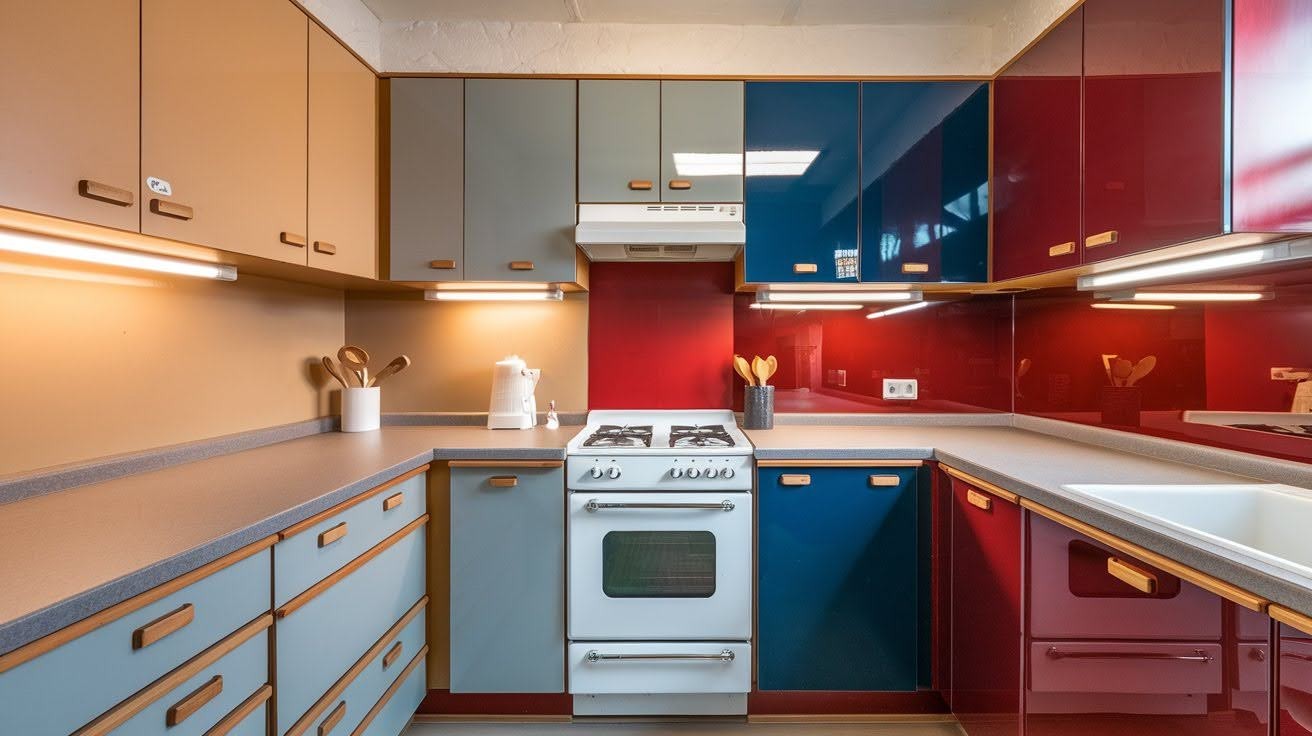
Your cabinet sheen affects your daily life. It determines how often you’ll be wiping down surfaces and how your kitchen holds up over time.
Sheen controls light reflection. Glossier finishes bounce light around, making spaces feel bigger and brighter. Flatter finishes absorb light, creating warmth and depth.
The wrong sheen creates frustration. A matte finish in a busy family kitchen shows every fingerprint. A high-gloss finish on rough wood highlights every flaw.
Match your sheen to how you actually use your kitchen. Consider your cooking habits, family size, and design vision. This decision shapes your kitchen’s personality and practicality for years.
Understanding Different Cabinet Sheens
Each finish level offers unique benefits and trade-offs for your cabinets.
Matte Sheen
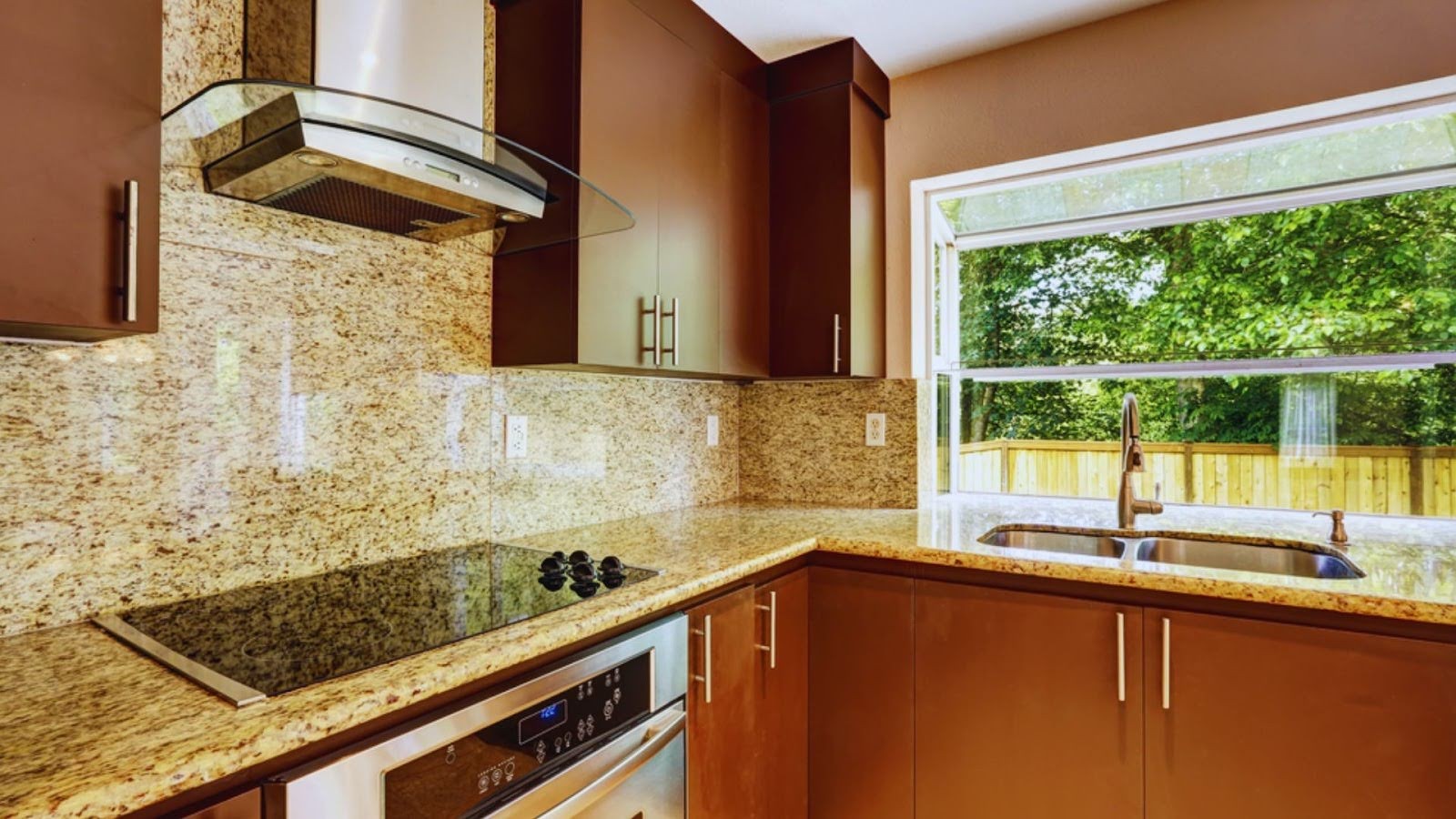
Matte finishes look soft and flat. There’s almost no shine or reflection. The surface appears smooth and understated.
The biggest advantage is hiding surface flaws. Minor dents, uneven wood grain, and application marks disappear. Matte creates a warm, organic feeling that suits relaxed kitchen styles.
The downside is maintenance. Grease and cooking residue cling to the surface. You’ll need gentle cleaners and more elbow grease to keep doors looking fresh.
Matte works beautifully in rustic farmhouse kitchens, minimalist Scandinavian designs, or traditional cottage spaces where perfection isn’t the goal.
Satin Sheen
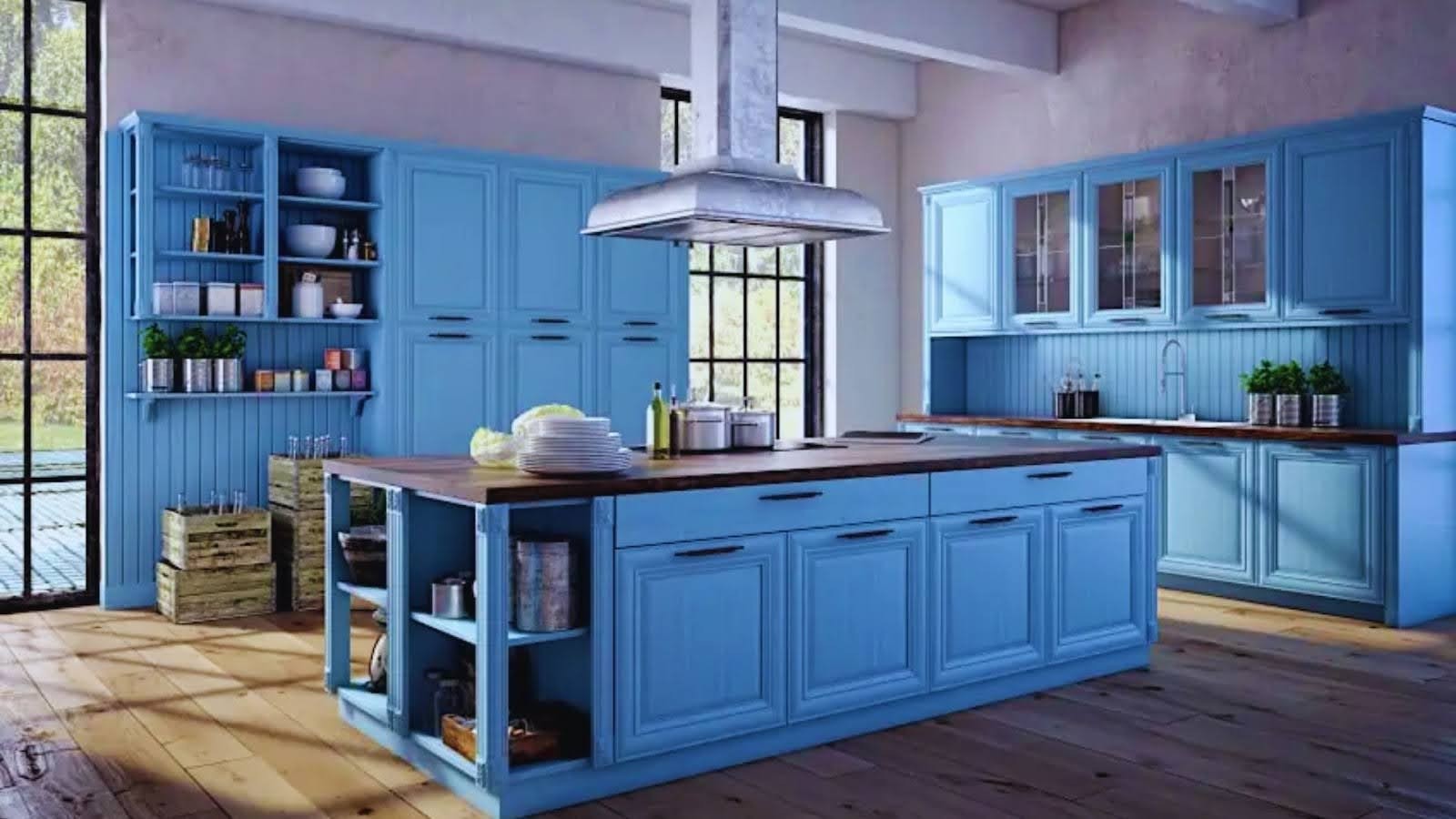
Satin strikes a balance. It has a subtle shine that catches light without being overly reflective. Think of it as the middle ground between matte and semi-gloss.
Satin is incredibly practical. It cleans easier than matte while still hiding minor imperfections. Most cabinet painters recommend it because it suits so many styles and needs.
The trade-off is less light reflection than glossier options. High-use areas might show wear over time, especially around handles and corners.
Satin fits transitional kitchens that blend traditional and modern elements. It also works well in contemporary spaces that want some shine without going bold.
Semi-Gloss Sheen
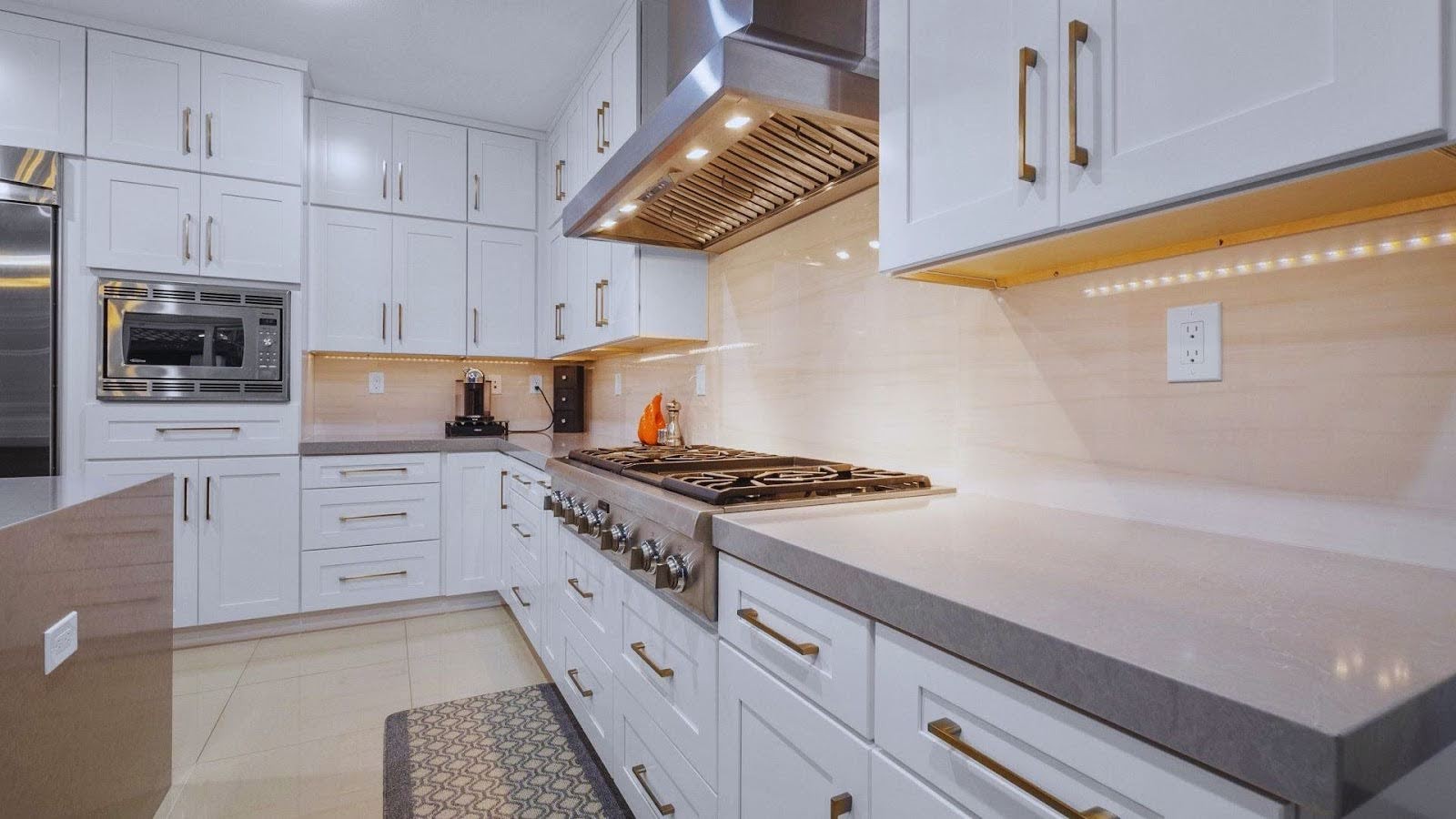
Semi-gloss delivers noticeable shine. The finish reflects light clearly and has a polished, professional appearance. It reads as clean and modern.
Durability is the main benefit. Semi-gloss stands up to repeated cleaning, moisture, and heavy use. A damp cloth wipes away grease and spills instantly.
The catch is that imperfections show up. Brush strokes, wood grain bumps, and uneven surfaces become visible. Your prep work needs to be thorough.
Semi-gloss belongs in busy family kitchens where function matters most. It also works on cabinets with smooth, well-prepared surfaces that can handle the scrutiny.
High-Gloss Sheen
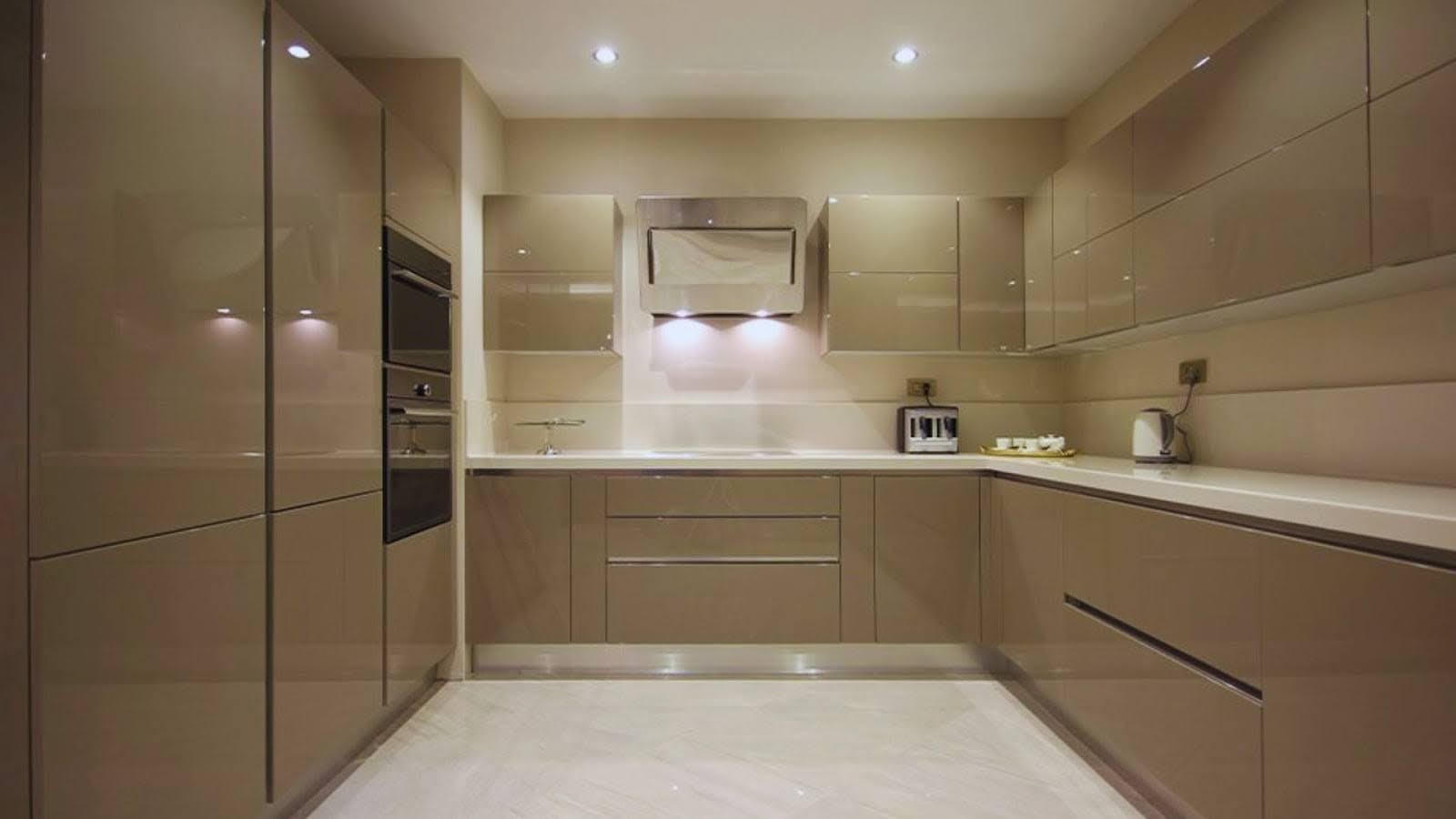
High-gloss creates a mirror-like surface. The finish is ultra-reflective and dramatic. It makes a bold statement in any kitchen.
The practical benefits are real. High-gloss is extremely durable and wipes completely clean. It also bounces light around, making small or dark kitchens feel more spacious.
The challenges are equally significant. Every fingerprint, scratch, and smudge shows up. You’ll need to clean frequently to maintain the look.
High-gloss fits modern, design-forward kitchens where drama matters. It also works in smaller spaces that need maximum light reflection to feel open and airy.
Key Factors to Consider When Choosing a Cabinet Sheen
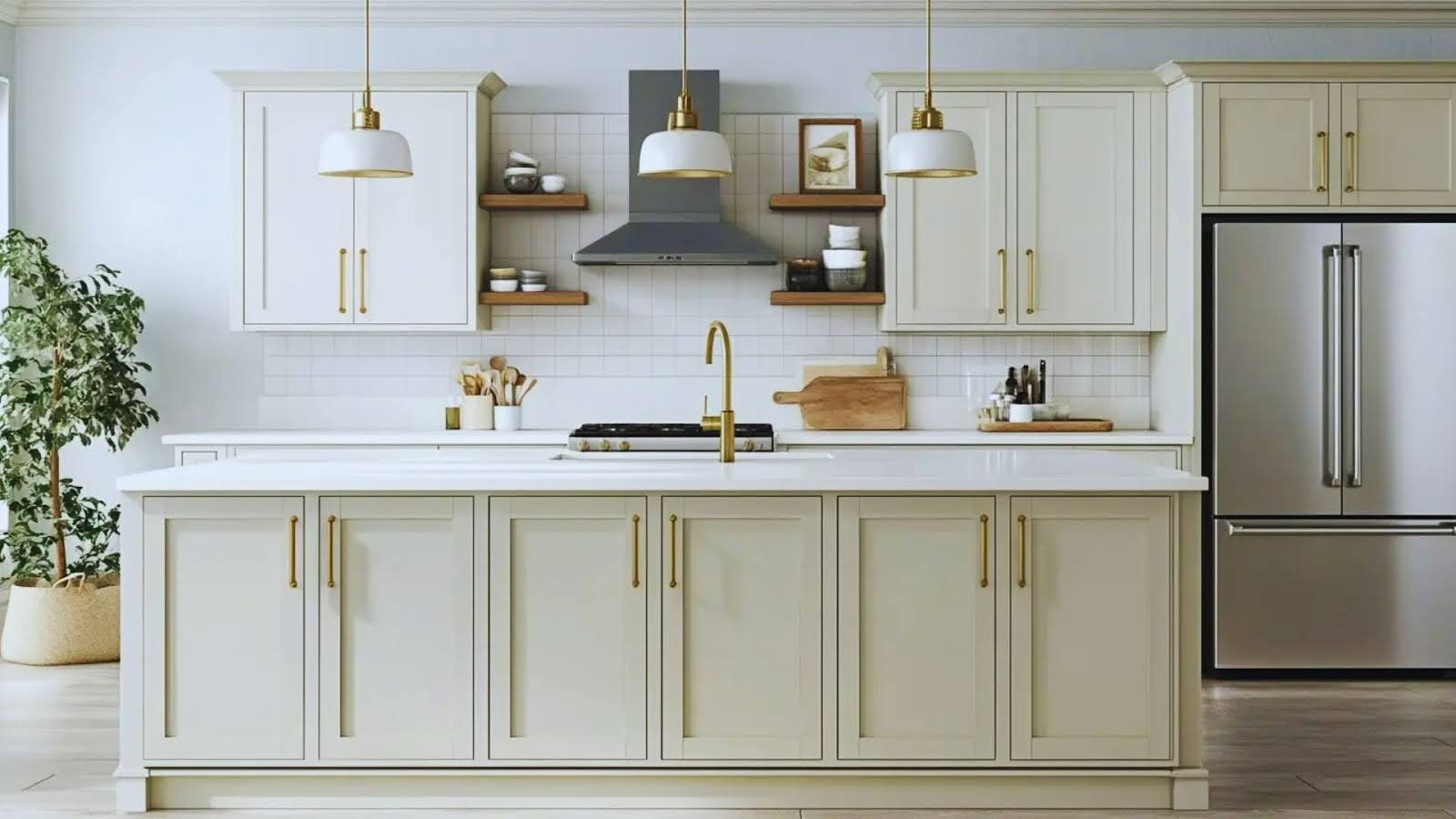
Your lifestyle, space, and personal taste should guide your sheen selection.
Kitchen Usage and Traffic:
Think about who uses your kitchen and how often. A busy household with kids needs different durability than a couple who rarely cooks.
High-traffic kitchens benefit from satin or semi-gloss. These finishes handle repeated touching, cleaning, and general wear. They’re built for real life.
Light-use kitchens can embrace matte if you love the look. The maintenance challenges matter less when cabinets aren’t constantly exposed to cooking mess.
Lighting and Space:
Your kitchen’s natural and artificial light changes everything. Glossy finishes amplify light, while matte absorbs it.
Small or dark kitchens gain from semi-gloss or high-gloss. The reflection opens up the space visually. Rooms feel larger and brighter instantly.
Large kitchens with abundant light can go matte or satin. These finishes prevent overwhelming brightness and create a more intimate atmosphere.
Cabinet Material and Condition:
Your existing cabinets set boundaries. Oak and other textured woods show grain through most finishes.
If you want satin or semi-gloss on grainy wood, you’ll need wood grain filler first. This creates the smooth surface these sheens require.
Matte forgives cabinet imperfections better. If your doors have minor damage or uneven surfaces, matte camouflages these issues naturally.
Personal Style and Design Goals:
Your taste matters most. No sheen is objectively better than another.
Matte suits people who value understated beauty and natural textures. It creates calm, refined spaces without calling attention to itself.
Satin and semi-gloss offer versatility. They work across design styles and appeal to people who want some shine without going extreme.
High-gloss is for bold personalities who embrace modern looks. It makes a statement and demands attention.
Tools and Prep for a Professional Finish
Preparation determines your results. The sheen you choose only looks good if the surface underneath is properly prepared.
Start by thoroughly cleaning your cabinet doors. Remove all grease, cooking residue, and old wax buildup. Use a de-glossing product to help the new paint stick.
Fill wood grain if you’re going with satin or glossier. Use a quality wood filler and sand it smooth. This step is not optional for a professional look.
Apply primer in thin, even coats. Let each coat dry completely. Most projects need two coats of primer for proper coverage.
Choose your application method wisely. Brushes work for small jobs but may leave marks. Rollers are faster but can create texture. Sprayers give the smoothest finish but require more setup.
Testing Sheen Before Committing
Always test your chosen sheen in your actual kitchen before painting all your cabinets.
- Never commit to a full kitchen without testing first. Small samples prevent expensive mistakes.
- Order sample boards in your chosen color and different sheens. Paint suppliers offer these specifically for testing purposes.
- Look at your samples throughout the day. Morning light differs from evening light. Notice how each sheen appears in various conditions.
- Paint one cabinet door or a small section before doing everything. Live with it for a week. Clean it a few times. Make sure you’re truly happy before moving forward.
Conclusion
Having painted the three kitchens in my house, I can tell you that what sheen for kitchen cabinets you choose really does make a difference. The satin paint on my kitchen cabinets makes me happy. It hides fingerprints better than I expected.
The test sample still looks relatively fresh after a couple of years inside. Test sample. You want a finish that gives you a smile every time that cup of coffee is in your hand in the morning.
Let us know what sheen you are thinking. And if this helped you, send it over to a friend who’s remodeling!
Frequently Asked Questions
What is the most durable sheen for kitchen cabinets?
Semi-gloss and high-gloss are most durable. They resist moisture and clean easily, making them perfect for busy kitchens.
Can I change the sheen without repainting my cabinets?
No, you must repaint to change sheen. The finish is part of the paint itself and cannot be altered separately.
Does cabinet sheen affect resale value?
Satin and semi-gloss appeal to most buyers. Extreme finishes may limit your buyer pool compared to these neutral options.
How do I clean different cabinet sheens?
Use damp cloths and mild soap on glossy finishes. Matte needs gentler cleaning with less water to avoid damage.
What sheen do professional cabinet painters recommend?
Most professionals suggest satin for its balance of durability and appearance. Semi-gloss comes second for high-traffic areas.

